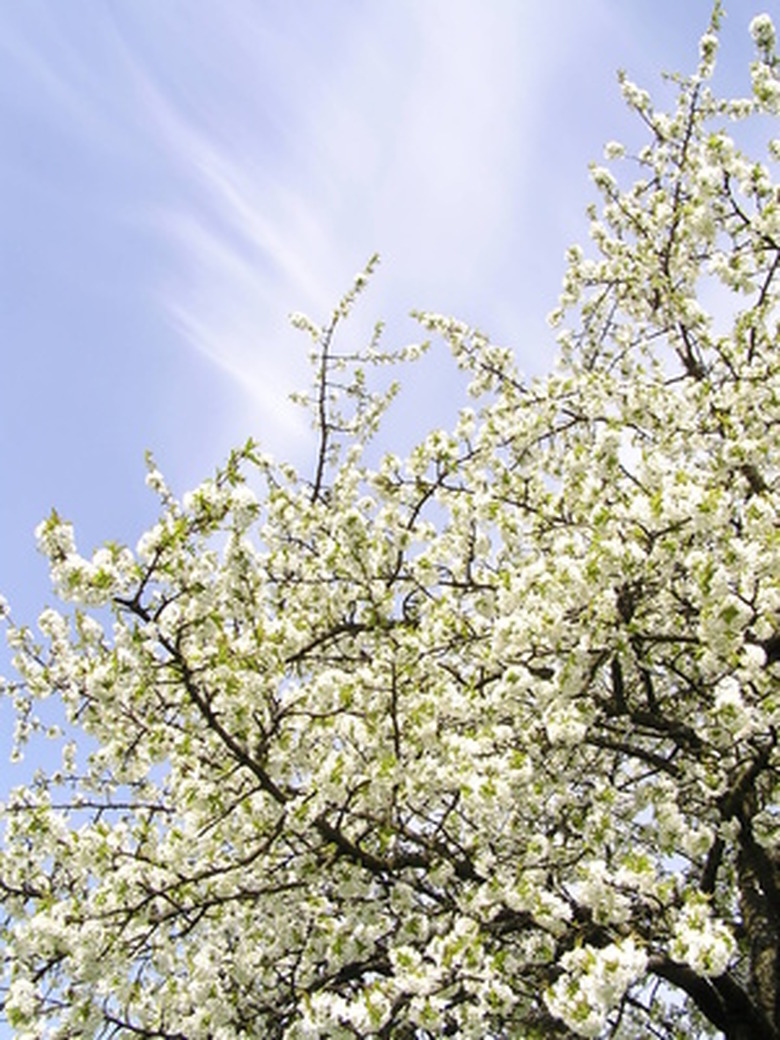Diseases Of Cherry Trees
The cherry tree is a deciduous stone fruit that can reach heights up to 30 feet with an equivalent spread. These trees thrive best in well-drained, sunny locations with moderately warm summers and mild winters. Even with ideal conditions, however; the cherry is susceptible to several common stone fruit diseases. These diseases, in most cases, are curable when addressed in a timely fashion.
Bacterial Canker
Bacterial canker is produced by bacteria that develop in the late fall. This bacterium lies dormant throughout the winter months and begins to attack the cherry tree in the late spring, usually after the final frost. The bacterium attacks all parts of the tree, from the foliage to the trunk.
- The cherry tree is a deciduous stone fruit that can reach heights up to 30 feet with an equivalent spread.
- This bacterium lies dormant throughout the winter months and begins to attack the cherry tree in the late spring, usually after the final frost.
Infected woods of the tree will develop cankers that will ooze sap. The infected foliage and fruit of the cherry tree will display brown, circular spots, some with lesions and depressions. Infected trees will also fail to open their buds. Though certain copper compounds can assist in controlling bacterial cankers, the fruit of the cherry tree can be damaged during treatment.
Black Knot
Black knot is a fungal disease that spreads with airborne spores. These spores travel by wind during rainy periods and settle on the crevices of the cherry tree's foliage, twigs and branches. Like many fungal diseases, this fungus lies dormant throughout the winter, infecting the tree in the spring. Black knot infects the newly developing twigs and branches, foliage, buds and fruit. Infected tree symptoms include brownish swellings and growth stunt.
- Infected woods of the tree will develop cankers that will ooze sap.
- Though certain copper compounds can assist in controlling bacterial cankers, the fruit of the cherry tree can be damaged during treatment.
As the infection becomes more aggressive, the swellings blacken and become elongated. Correct infected trees with a combination of avid pruning and regular fungicide treatments.
Cherry Leaf Spot
Cherry leaf spot is a fungal disease that develops on the defoliated leaves that rest around the cherry tree. These fungal spores lie dormant on the ground throughout the winter months. During the wet spring months, the rain assists these spores in traveling up into the cherry tree, infecting its newly developing foliage.
Infected foliage develops purplish spots that initially appear as pin-sized spots. As the infection progresses, these spots grow larger, the foliage begins to yellow and the deadened areas of the leaves drop off. Though cherry leaf spot normally infects the tree's foliage, the disease can spread to the twigs, if left untreated. Treat and control this disease with regular fungicidal treatments and regular removal of the defoliated foliage around the tree.
- As the infection becomes more aggressive, the swellings blacken and become elongated.
- During the wet spring months, the rain assists these spores in traveling up into the cherry tree, infecting its newly developing foliage.
